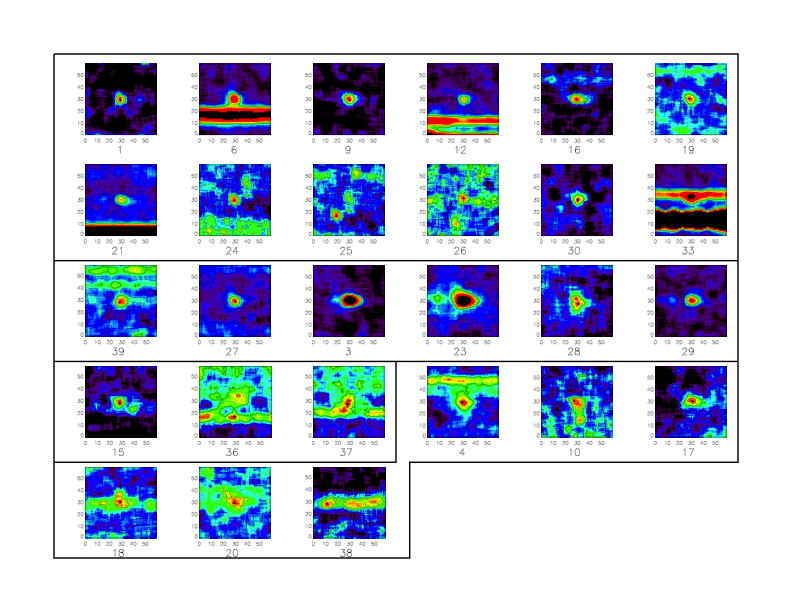Galactic Building Blocks at High Redshift: Damped Lyman Alpha Systems and Lyman Alpha Emitters
Damped Lyman alpha absorptions systems (DLAS) are very strong absorption lines occasionally seen in high redshift QSO spectra. They resemble absorption features expected when the line of sight to a background QSO intersects
the disk of a galaxy. In fact, the disk of the Milky Way also produces a DLAS against background QSOs. DLAS, just like disk galaxies nowadays, contain indeed most of the neutral
gas in the universe (but not most of the gas; that appears to be in a
highly ionized form in the low density IGM).
DLA features can even be seen at very high redshift, when the universe was young, but there always was the question whether massive galaxies can
really exist at these early times, or whether DLAS actually represent a different
class of objects at high redshift. For
example, the metal abundances of high z DLAS are lower than those of present
day disk galaxies. Moreover, many of the other properties of matter at high
redshift (as observed, e.g., in the Lyman alpha forest or the Cosmic
Microwave Background) agree better with a picture of hierarchical
structure formation, where most high redshift galaxies are small, and
modern galaxies grow gradually through the inflows of gas and mergers of smaller predecessors formed earlier.
The nature of damped Lyman alpha systems
Our simulations of gaseous collapse around newly forming
galaxies (with Haehnelt and Steinmetz) have shown that DLAS indeed automatically form as a
by-product of hierarchical structure formation. In contrast to the
older standard picture (massive disks produced by monolithic collapse
at high redshift) the simulations revealed DLAS to be mostly small galaxies
with immature disks.
This picture of DLAS as mostly low mass, faint building blocks
seems to have found general acceptance now. Imaging searches of DLA absorbers at low redshift
with the Hubble Space Telescope for candidate galaxies have failed to turn up bright, massive galaxies with
extended star formation as possible galactic counterparts of DLAS.
Faint Lyman alpha emitting galaxies and the connection to DLAS
New light was shed on the nature of the underlying galaxies a few years ago when some of us discovered a large population of faint Lyman alpha emitting galaxies at z~3.
The partly accidental discovery, made in an ultra-deep spectroscopic survey
(with 92 hours of total exposure time; Rauch et al 2008), suggests that there is
an abundant population of gas-rich, low mass "dwarf" galaxies at high z that
is largely responsible for the DLA absorption cross-section.
Given the sensitivity of the data we were able to detect, for the first time, individual extended Lyman alpha
halos around many of those faint galaxies, suggesting that these halos are a generic
feature of star-forming galaxies.
Further support for the correspondence between DLA host galaxies and faint
Lyman alpha emitters comes from studies of the aggregate Lyman alpha emission
in a large number of stacked DLA absorption troughs seen in QSOs (Rauch & Haehnelt 2011),
which show that the average luminosity in a DLA absorption system is very similar
to that of the faint Lyman alpha emitter sample from Rauch et al 2008.
Faint Lyman alpha emitters near redshift 3. The cutouts show the 2-dimensional, 15.1"x2270 km/s wide spectral
regions around the Lyman alpha emission lines.
Note the characteristic left-right (=blue-red) asymmetry of the emission line in many cases. These objects appear to be the counterparts in emission of the damped Lyman alpha systems.
 |
Publications:
Rauch, M., Haehnelt M.G. :
Faint resonantly scattered Lyα emission from the absorption troughs of damped Lyα systems at z ~ 3,
MNRAS 412:55, 2011
Rauch, M., et al : A Population of Faint Extended Line Emitters and the Host Galaxies of Optically Thick QSO Absorption Systems, Astrophysical Journal, Astrophysical Journal 681:856, 2008
Haehnelt, M.G., Steinmetz, M., Rauch, M.: Damped Ly Absorber and the Faint End of the Galaxy
Luminosity Function at High Redshift, Astrophysical Journal, Astrophysical Journal 534:594-597, 2000
Haehnelt, M.G.,
Steinmetz, M., Rauch, M.: Damped Lyman Alpha Absorber at High Redshift:
Large Disks or Galactic Building Blocks ?, Astrophysical Journal,
495:647-658, 1998
Rauch, M., Haehnelt, M.G.,
Steinmetz, M. : QSO Metal Absorption Systems at High Redshift and the Signature of Hierarchical Galaxy Formation, Astrophysical Journal,
481:601, 1997
Haehnelt, M.G., Steinmetz,
M., Rauch, M.:C IV Absorption from Galaxies in the Process of
Formation, Astrophysical Journal, 465:L95-L98, 1996

